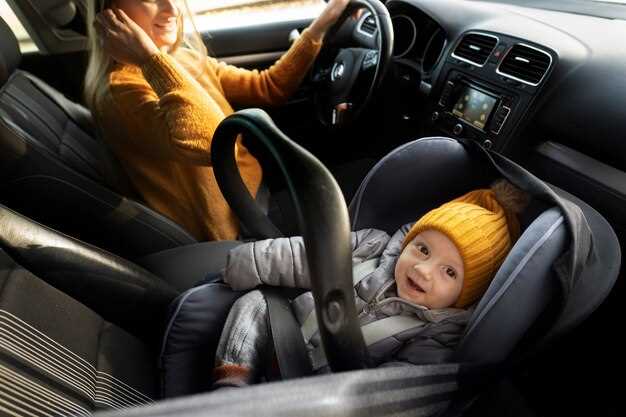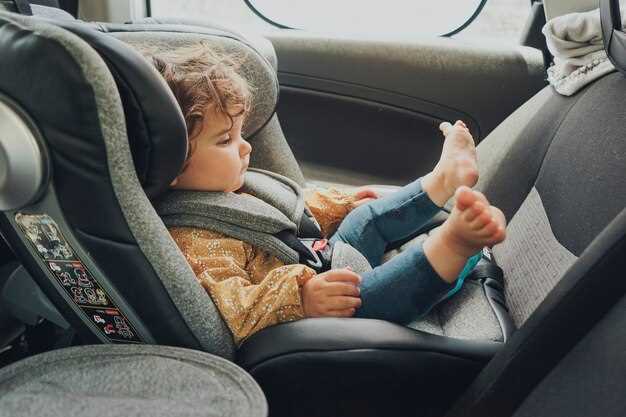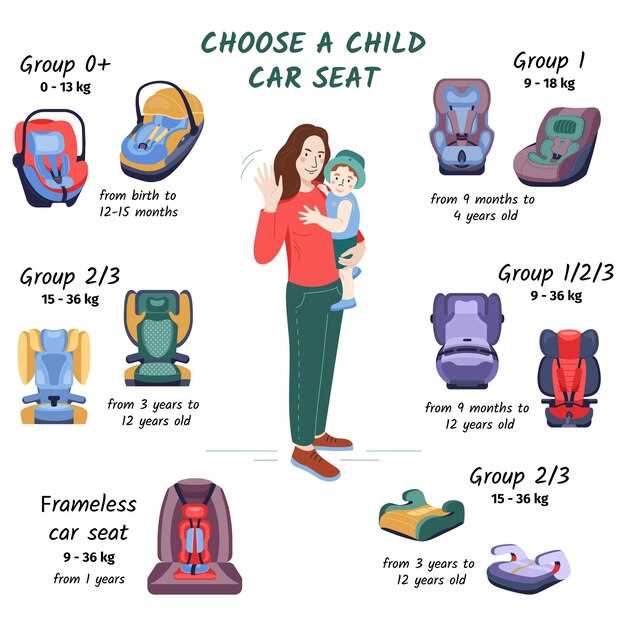
When it comes to ensuring the safety of your little passengers, choosing the right child seat is of utmost importance. With a diverse lineup of vehicles, Toyota offers a range of cars and SUVs that suit families, but the compatibility and safety ratings of child seats are crucial factors that parents must consider. Whether you drive a compact Toyota sedan or a spacious SUV, finding the best child seat that fits well and provides maximum protection is essential for peace of mind.
Understanding the different types of child seats available is key to making an informed decision. These typically include rear-facing infant seats, convertible seats that can transition from rear to forward-facing, and booster seats for older children. Each category has specific safety features and weight limits, and selecting the right seat can impact both safety and comfort during your travels. In this article, we’ll explore the best options tailored for various Toyota models, emphasizing their safety ratings, installation ease, and suitability for different age groups.
The goal is to highlight child seats that not only meet safety standards but also seamlessly integrate into the Toyota vehicle lineup. By reviewing top-rated models, we aim to provide insights that will help you choose the most reliable child seat for your needs, ensuring that every journey with your child is as safe and secure as possible.
Choosing the Right Child Seat for Your Toyota Model

Selecting the appropriate child seat for your Toyota vehicle is crucial for ensuring your child’s safety during travel. With various models available, it’s essential to understand how to match a child seat to your specific Toyota model.
The first step is assessing your Toyota’s compatibility with different child seat types: rear-facing, forward-facing, and booster seats. Rear-facing seats are generally recommended for infants and young toddlers, while forward-facing seats cater to older children. Booster seats are designed for kids who have outgrown their forward-facing seats but still require additional elevation to use the car’s seat belt effectively.
When choosing a child seat, examine manufacturers’ guidelines for weight and height limits, ensuring they align with your child’s size and developmental stage. Also, be mindful of the seat’s installation process. Many Toyota models come equipped with LATCH (Lower Anchors and Tethers for Children) systems, simplifying the installation of compatible child seats.
Assessing safety ratings should also be a priority. Look for child seats that meet or exceed federal safety standards, and consult reviews to identify models specifically praised for their performance within Toyota cars and SUVs.
Furthermore, consider the interior space of your Toyota model. Larger vehicles may provide more room for multiple child seats or additional space for legroom, while compact models may require more thoughtful arrangement for comfort and accessibility.
Finally, remember to regularly check for recalls and updates related to your chosen child seat. Prioritizing safety through informed choices will ensure that every ride in your Toyota is as secure as possible for your child.
Understanding Toyota’s Safety Features for Child Restraints

Toyota prioritizes safety in all its models, incorporating advanced features to ensure optimal protection for child passengers. One of the key elements is the LATCH (Lower Anchors and Tethers for Children) system, which facilitates the secure installation of child seats without the need for seat belts. This system significantly reduces the risk of improper installations, enhancing safety during travel.
Additionally, many Toyota vehicles are equipped with child-proof rear door locks, preventing children from accidentally opening doors while the vehicle is in motion. This feature is crucial for protecting young passengers who may not understand the dangers of unrestrained movement within the car.
Toyota also integrates advanced airbag systems in its models, which include cut-off switches for front passenger airbags, allowing parents to safely place rear-facing child seats in the front passenger seat when necessary. This flexibility is essential, especially for compact cars where back seat space may be limited.
Moreover, the crashworthiness of Toyota vehicles adds an extra layer of protection. Extensive crash testing ensures that vehicles can withstand various impact scenarios, providing safety for all passengers, including those in child seats.
Finally, Toyota offers ongoing safety education through manuals and online resources, providing parents with necessary information on selecting and installing child seats correctly. This commitment to safety reflects Toyota’s dedication to protecting the youngest members of the family.
Tips for Properly Installing Child Seats in Toyota Vehicles
Ensuring the safety of your child while traveling in a Toyota vehicle is of utmost importance. Proper installation of child seats is crucial for maximizing their protective capabilities. Here are some essential tips for correctly securing child seats in your Toyota.
1. Read the Manual: Always start by reading both the child seat manual and your Toyota’s owner manual. These documents provide specific guidelines and instructions related to the installation process, vehicle features, and safety recommendations that are vital for your particular model.
2. Choose the Right Seat: Depending on your child’s age and weight, select an appropriate child seat. Toyota vehicles often have compatible models, so ensure you pick one that meets safety standards and fits well within the interior space.
3. Use the LATCH System: Most Toyota vehicles are equipped with the Lower Anchors and Tethers for Children (LATCH) system. This system simplifies the installation process and provides a secure method for fixing the child seat. Always ensure that the LATCH straps are tight and that the seat does not move more than one inch side to side or front to back once installed.
4. Ensure Proper Angle: Many infant seats require a specific angle for optimal safety. Use the built-in level indicators available on the seats or consult the seat manual to adjust the recline angle. This is especially important for newborns or young infants.
5. Secure with Seat Belt: If you prefer using a vehicle’s seat belt instead of the LATCH system, ensure the belt is properly routed through the child seat’s belt path. The belt must remain locked and snug, with no slack. Double-check the tightness after securing.
6. Positioning Matters: Place the child seat in the back seat of your Toyota, as it’s the safest location during a crash. The center position is ideal if possible, but side positions are acceptable provided you utilize the anchor points properly.
7. Regular Checks: Periodically check the installation of the child seat to ensure it remains secure over time. Make sure the harness is correctly positioned and fits snugly against your child without being too constrictive.
8. Seek Professional Help: If you’re unsure about the installation, consult a certified Child Passenger Safety Technician (CPST). They can provide guidance and assistance to ensure safety is prioritized.
By following these tips, you can confidently install child seats in your Toyota vehicle, ensuring the highest level of safety for your child. Remember, proper installation is key to effective protection.
